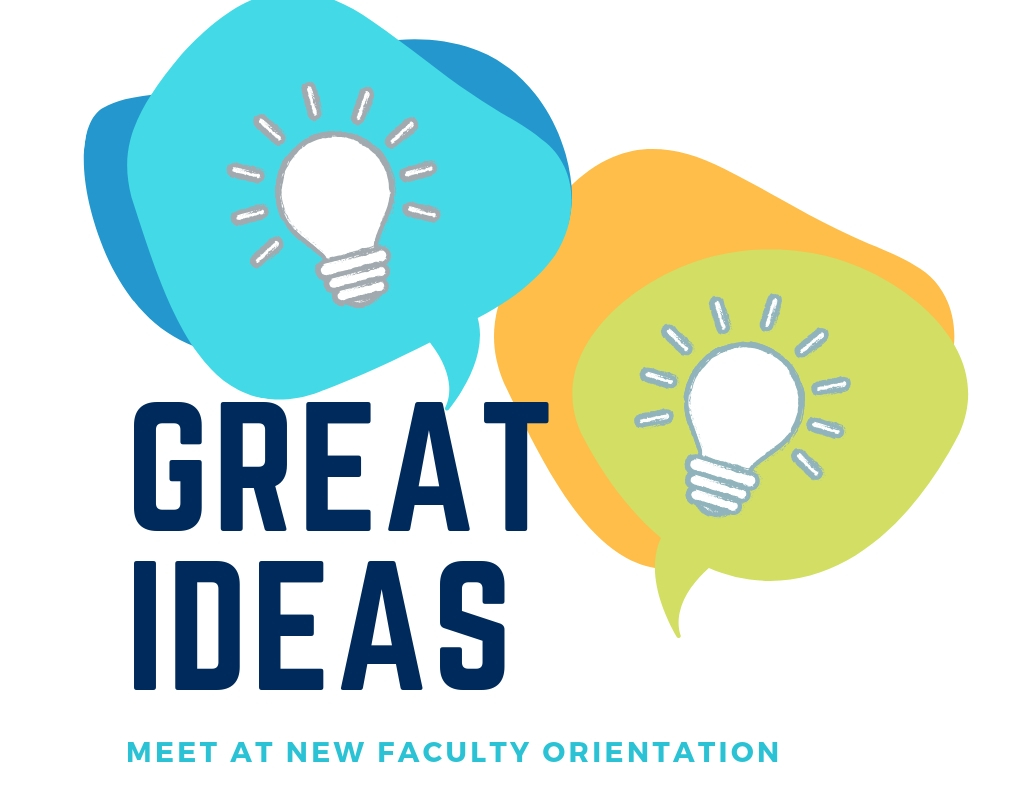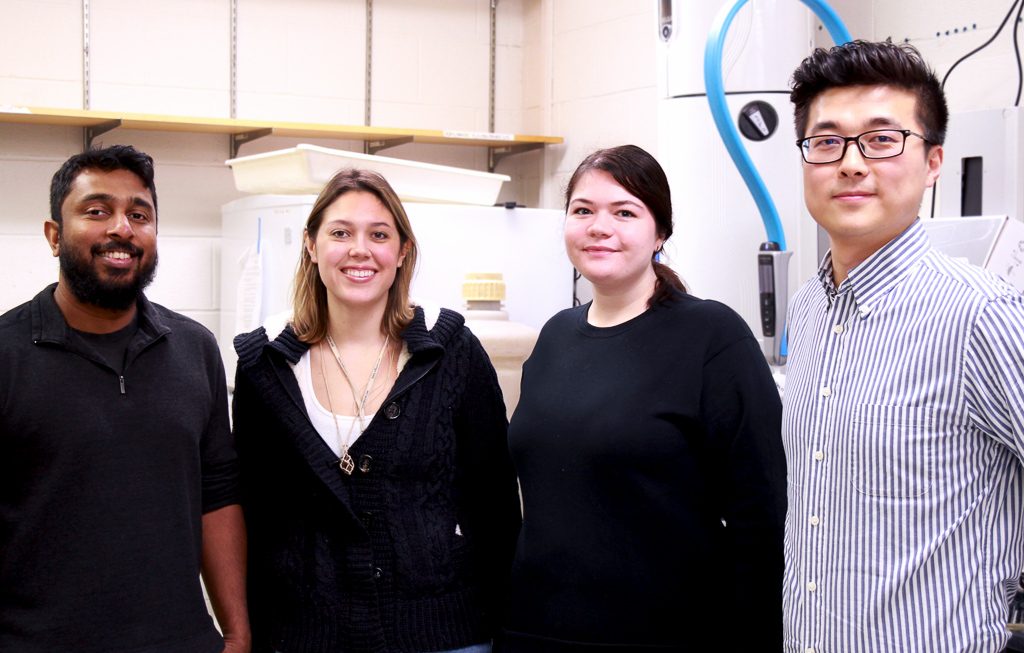
Research possibilities are endless as new faculty collaborate
New faculty find opportunity to collaborate in an interdisciplinary research project.
Nishad Jayasundara studies toxic effects of various chemicals at the cellular level, including those commonly found in Maine waterways. Before coming to the University of Maine, he often wondered about the possibilities of creating a model that could predict the outcome of chemical reactions without having to test them in the lab – but would need help from an expert to do so.
The opportunity to find a partner for his idea came at the 2017 UMaine New Faculty meeting. Jayasundara, assistant professor of marine sciences met many professionals from diverse studies at the meeting, including Zheng Wei, assistant professor of math and statistics, and discussed how they could work together to develop this model.
“In a collaborative project with another professor in my department, we were generating toxicity data for chemicals using a novel method and I’d been trying to find a different way to analyze that data. While the way we were collecting the data was novel, the analysis was not very sophisticated. So, when I met Wei and heard about his research interests, I basically cornered him,” Jayasundara said.
And so, a research project was created: “High throughput predictive bioenergetics through statistical machine learning for big-data to assess biological responses to environmental stressors.”
Studying the health effects of pollution.
The research tests how certain chemicals, such as a common chemical found in Maine ground-water called arsenic, affect cell functions even at levels that are considered safe for human consumption.
They are particularly focused on how mitochondria, the energy producing power house of the cell, is affected by these chemicals. The model they are developing aims to predict the effects of these chemicals without physically testing them at every concentration. This will save time and money for future research and also provide vital data that will indicate the levels of chemicals we should be concerned about.
“We aim at developing a statistical prediction model by integrating biological data, in this case mitochondrial respiration data that are generated from Jayasundara’s lab, with machine learning approaches on big-data,” Wei said.
This project is one of nine inaugural Interdisciplinary Undergraduate Research Collaborative (IURC) grants. The grant provided start-up funds for the research while the team pursues more funding to continue developing this project in the future. The funds also allowed the opportunity for two UMaine undergraduates to gain valuable experience in research work on this project.

New faculty research allows interdisciplinary opportunities for students.
Bradlyn McEttrick, marine sciences undergraduate, and Madeline Dorr, mathematics undergraduate, met through this interdisciplinary project. They are from different departments at UMaine and would not have worked together if not for Jayasundara and Wei developing this project.
McEttrick jumped at this opportunity to work in a research lab as a first-year student. She appreciates the experience and believes more incoming students should take opportunities in performing research. Working on this project allows her to gain important experience that will help further her education and future career.
She says that as a freshman, she only had a vague idea of what career-path she wanted to follow and working in the lab was an eye-opening experience for her. She explains that when people think of going into marine sciences, the perception is they will one day work in an aquarium – a perception she hopes will change with more students having hands-on experiences in university research labs.
“This opened up my horizons of what I can do with my career,” McEttrick said. “I wanted to help people ever since I was younger and now this gives me an opportunity to actually make the difference with science.”
Dorr thought it was interesting to work with another student outside her field of study. She learned how to communicate through different scientific disciplines. She is able to gain relevant experience for pursuing graduate school.
“Working with Bradlyn meant I was working with someone who has taken very different classes than me. One time, when Bradlyn and I met up to prepare for a presentation on this research, we ended up spending a lot of time talking about our different parts of the project and sharing background knowledge from our respective disciplines. It was very interesting to find out how two seemingly unrelated areas of study coincide and can used together for research projects,” Dorr said.
Collaborations result in fascinating research possibilities.
Jayasundara and Wei combined biological sciences and statistics knowledge to create opportunities for new research and new experiences for undergraduates. The possibilities are endless and the results are fascinating when faculty and students combine diverse skill sets in research.
For more stories like this, read about other IURC projects here at UMaine.
Supporting Undergraduate Research: Interdisciplinary Team Tackles Food Waste This Summer
Studying tick-borne diseases in an iconic native Maine species: Moose
Developing an app to revolutionize greenhouse farming in Maine
Muscular dystrophy research aims to understand muscle degeneration
Learn more about student projects like this and chat with researchers directly about their work at the 2019 UMaine Student Symposium (#UMSS19) on April 10 at the Cross Insurance Center in Bangor.
Author: Kendra Caruso
Media Contact: Christel Peters, 207.581.3571
